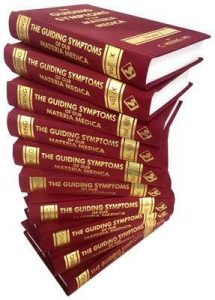Introduction
 In this article, we explore the concept of ‘materia medica’ within classical homeopathy, an essential framework for understanding and applying homeopathic remedies. We discuss how materia medica refers both to the collection of symptoms associated with a specific remedy and to the physical books where these symptoms are documented. Additionally, we provide an overview of different types of materia medica books and their practical use. Finally, we offer practical tips for patients interested in learning more about the remedy prescribed to them and highlight the importance of proper education in effectively utilizing materia medica. This article serves as a valuable resource for anyone seeking to deepen their understanding of the foundations of classical homeopathy.
In this article, we explore the concept of ‘materia medica’ within classical homeopathy, an essential framework for understanding and applying homeopathic remedies. We discuss how materia medica refers both to the collection of symptoms associated with a specific remedy and to the physical books where these symptoms are documented. Additionally, we provide an overview of different types of materia medica books and their practical use. Finally, we offer practical tips for patients interested in learning more about the remedy prescribed to them and highlight the importance of proper education in effectively utilizing materia medica. This article serves as a valuable resource for anyone seeking to deepen their understanding of the foundations of classical homeopathy.
Table of Contents
What is ‘materia medica’ according to classical homeopathy?
In classical homeopathy, we use the term ‘materia medica,’ which can be loosely translated as ‘medical material.’ This concept can be interpreted in two different ways:
1. Materia medica as a collection of symptoms
This refers to the compilation of all symptoms associated with a specific homeopathic remedy. It is an intangible concept that describes the characteristics and effects of a remedy. For example: “According to the materia medica of Silicea Terra, this remedy is characterized by its tendency to easily develop inflammations.” Here, it refers to an abstract collection of symptoms related to a remedy, regardless of how these symptoms are documented.
2. Materia medica as a physical book
Additionally, ‘materia medica’ can also refer to the physical books in which these symptoms are documented. These are tangible resources, such as books or digital documents, that describe the properties and symptoms of various remedies. For example: “In the Desktop Guide to Keynotes and Confirmatory Symptoms, the key characteristics of Calcarea Carbonica are described.” In this case, it refers to a concrete, physical object where the symptoms are recorded.
The ‘ideal’ materia medica
The ideal materia medica refers to a meticulously curated collection of symptoms associated with a particular homeopathic remedy. This collection is based on three fundamental sources: remedy proving, poisoning, and clinical confirmation. The integration of these sources provides a reliable and comprehensive understanding of a remedy’s effects. However, it is important to note that the materia medica we know for each remedy is not always complete and therefore not always ideal.
But how are these symptoms precisely defined and categorized within the materia medica? This leads us to the next important aspect: the specific symptoms associated with each remedy and how these symptoms contribute to the unique identity of that remedy within homeopathy.
Symptoms in the materia medica
Each remedy is associated with a set of symptoms, sometimes just a few, sometimes hundreds. This complete set of symptoms is unique to each remedy. While an individual symptom may appear in multiple remedies, the combination of different symptoms is unique to each remedy. For example, the remedy Silicea Terra has the following symptoms: being remarkably meticulous, sensitivity to drafts, excessive sweating, and being very thin. In contrast, the remedy Kalium Carbonicum includes symptoms such as being easily irritated, sensitivity to drafts, excessive sweating, and being corpulent.
In this example, you can see that both remedies share sensitivity to drafts, but each remedy also has two other symptoms that the other does not. Thus, there is some overlap between Silicea Terra and Kalium Carbonicum, but there are also differences that make each remedy unique. The table below represents these similarities and differences in a different way. In this manner, you could compare all remedies and observe that there are usually both similarities and differences.
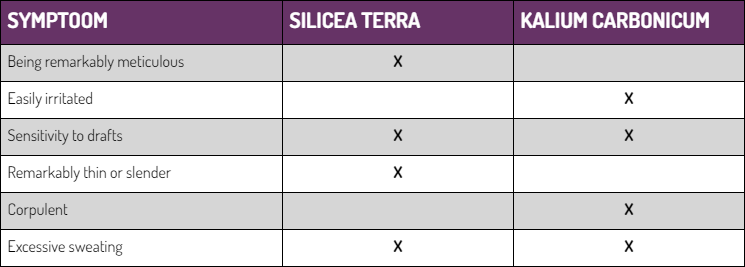
Keynotes in the materia medica
Keynotes are essentially special symptoms. These are symptoms that are particularly characteristic of a specific remedy. For example, the symptoms mentioned in the previous example for Silicea Terra are also keynotes of this remedy. Naturally, the number of keynotes for a remedy is smaller than the total number of symptoms.
Different types of materia medica books
The physical form of materia medica consists of numerous books written over the centuries. A materia medica book is often a list of remedies, with each remedy accompanied by information about the symptoms associated with it. Today, there are hundreds of books available to the classical homeopath, making it impractical to discuss all of them. For a homeopath, it’s important to know what is covered in each type of book, as this knowledge allows for more targeted searching for the similimum. Suppose you have a very specific symptom and want to know if it’s a keynote of a particular remedy. In that case, you would want to consult keynote books. But if a patient presents with a very specific and detailed symptom, you might want to look it up in an encyclopedic materia medica. Here are some types of materia medica books:
Keynote materia medica books
 Keynote books provide descriptions of the most important characteristics of various remedies. These descriptions are typically concise because they focus on the key features of each remedy. Often, the author describes remedies based on their own experiences with remedies or certain patient groups, which means different books may contain varying content. The purpose of this type of book is to quickly identify the most characteristic features of a remedy, for example, when conducting a differential diagnosis. Examples of this type of keynote materia medica books include:
Keynote books provide descriptions of the most important characteristics of various remedies. These descriptions are typically concise because they focus on the key features of each remedy. Often, the author describes remedies based on their own experiences with remedies or certain patient groups, which means different books may contain varying content. The purpose of this type of book is to quickly identify the most characteristic features of a remedy, for example, when conducting a differential diagnosis. Examples of this type of keynote materia medica books include:
- Allen’s Keynotes Rearranged and Classified – Henry Clay Allen
- Desktop Guide to Keynotes and Confirmatory Symptoms – Roger Morrison
- Key-notes to the Materia Medica – Henry N. Guernsey
Encyclopedic materia medica books
Encyclopedic books aim to describe all the symptoms of a remedy in a comprehensive list. As a result, these books are usually large and may consist of several volumes. Often, these books include some form of citation, with symptoms often quoted verbatim from original sources. It is truly remarkable how some homeopaths in the 19th century were able to write such extensive books with limited technology. Compared to modern books, they also contain relatively few errors, which in itself deserves respect. The purpose of this type of book is to find very specific symptoms. For example, if a patient reports a very specific symptom that may not appear in a keynote book, these encyclopedic books are invaluable. Examples of encyclopedic books include:
- The Guiding Symptoms of our Materia Medica – Constantine Hering
- Encyclopedia of Pure Materia Medica – Timothy F. Allen
- A Dictionary of Practical Materia Medica – John Henry Clarke
Narrative materia medica books
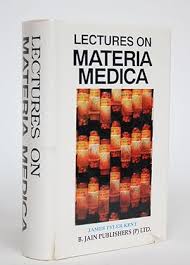 In narrative books, the author describes the characteristics and experiences with remedies in a storytelling format. The remedy is not presented as a list of symptoms, as in other types of books, but as a narrative. The purpose of this type of book is to deepen the understanding of remedies, as a story is often easier to follow and remember compared to a list. A drawback of such books is that they are not as easy to search for specific symptoms, and the information is influenced by the author’s experiences and perspective. Some examples of narrative books are:
In narrative books, the author describes the characteristics and experiences with remedies in a storytelling format. The remedy is not presented as a list of symptoms, as in other types of books, but as a narrative. The purpose of this type of book is to deepen the understanding of remedies, as a story is often easier to follow and remember compared to a list. A drawback of such books is that they are not as easy to search for specific symptoms, and the information is influenced by the author’s experiences and perspective. Some examples of narrative books are:
- Lectures on Homoeopathic Materia Medica – James Tyler Kent
- A Study of Materia Medica – N.M. Choudhuri
- Homœopathic Drug Pictures – Margaret Lucy Tyler
Clinical materia medica books
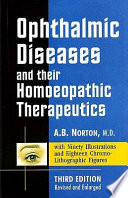 Clinical books approach materia medica from a pathological perspective. Remedies are described in relation to specific conditions. Sometimes such a book focuses on a specific topic (e.g., rheumatic complaints or eye problems), but often it covers a group of different conditions. Remedies are then described in relation to these conditions. The purpose of this type of book is to quickly find remedies that may be applicable to a patient, with a focus on specific pathology. However, it is important to realize that in classical homeopathy, we never prescribe a standard remedy for a particular diagnosis or disease (this aligns with clinical homeopathy). More on this is described in the article on the strategy pathology.
Clinical books approach materia medica from a pathological perspective. Remedies are described in relation to specific conditions. Sometimes such a book focuses on a specific topic (e.g., rheumatic complaints or eye problems), but often it covers a group of different conditions. Remedies are then described in relation to these conditions. The purpose of this type of book is to quickly find remedies that may be applicable to a patient, with a focus on specific pathology. However, it is important to realize that in classical homeopathy, we never prescribe a standard remedy for a particular diagnosis or disease (this aligns with clinical homeopathy). More on this is described in the article on the strategy pathology.
For example, if a patient has urinary tract infections and you want to know the specific characteristics of various remedies with this type of complaint as a prominent pathology, you can compare remedies applicable to urinary tract infections in general and choose the one that best matches the specific symptoms of the individual patient. Examples of clinical books include:
- Pointers to Common Remedies – Margaret Lucy Tyler
- Practical Homoeopathic Therapeutics – W.A. Dewey
- Ophthalmic Diseases and their Homoeopathic Therapeutics – Arthur Brigham Norton
- Homoeopathic Therapeutics – Samuel Lilienthal
- Homoeopathy in Medicine and Surgery – Edmund Carleton
- Leaders in Homeopathic Therapeutics – Eugene Beauharnais Nash
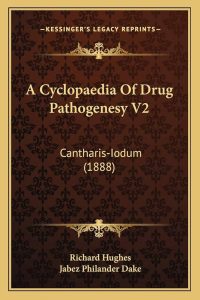 Remedy proving diaries
Remedy proving diaries
Drug proving diaries consist of the journals of participants in remedy provings. These are literal accounts of what participants experienced during the drug proving process. Essentially, they are the sources of materia medica. The purpose of this type of book is to describe the order in which symptoms developed and the exact wording of the participants. An example of such a diary is:
Differential diagnosis materia medica books
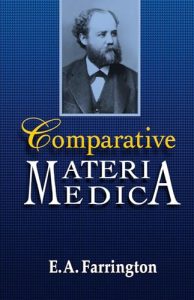 Differential diagnosis books compare remedies with each other, describing their similarities and differences, often focusing on a specific area, such as nutrition, skin, heart, sleep, etc. The purpose of this type of book is to quickly find the similarities and differences between certain remedies. However, their usefulness is limited because these books typically compare only a certain selection of remedies and a limited number of symptoms. Examples of differential diagnosis books are:
Differential diagnosis books compare remedies with each other, describing their similarities and differences, often focusing on a specific area, such as nutrition, skin, heart, sleep, etc. The purpose of this type of book is to quickly find the similarities and differences between certain remedies. However, their usefulness is limited because these books typically compare only a certain selection of remedies and a limited number of symptoms. Examples of differential diagnosis books are:
- Comparative Materia Medica – Rudolf Herman Gross
- Comparative Materia Medica – Ernest Albert Farrington
Digital materia medica libraries
Nowadays, many books have been digitized, allowing you to search one or more books using software. The advantage is that you can quickly search for certain remedies and symptoms and even perform analyses similar to using a repertory. A digital library certainly has its advantages, but also its drawbacks. Because you don’t need to memorize anything, you end up constantly looking things up, which can cost too much time in the long run. This effect has various names: the Google effect/digital amnesia effect (see also Study Finds That Memory Works Differently in the Age of Google) or the Photo-Taking Impairment effect. Reading physical books forces you to remember more and actively learn. This will save a lot of time in the long run when working out a consultation. Good homeopaths who read physical books can often prescribe a remedy at the end of the consultation or without much further analysis after a relatively short period. Examples of these digital libraries include:
- Complete Dynamics
- Encyclopaedia Homeopathica (now integrated into Radar Opus)
- Hompath Zomeo
- Synergy Homeopathic Software
- Vithoulkas Compass
Example of using homeopathic materia medica
To illustrate how a homeopath works with the materia medica, let’s consider the following example. Suppose a patient with a complaint like migraine visits a homeopath. During the discussion of the precise nature of the migraine, it emerges that the patient sees “sparks” before their eyes, which often occur in the morning after waking up. The patient also experiences nausea during the migraine attack. This is one of several symptoms that appear during a severe migraine day. In addition to this specific complaint, there are other symptoms, including a throbbing headache, always on the right side of the head. It also turns out that the symptoms began after a severe sunstroke a few years ago. At some point during the consultation, the homeopath asks if the patient has a pronounced craving for certain foods. In this case, the patient has a strong desire for sour foods. There are other symptoms as well, but they are not relevant for this example.
 A homeopath who does not yet have extensive knowledge of the materia medica might first perform a repertorization (looking up symptoms in an index-like tool) to create a shortlist of potential remedies. The homeopath would then study the top-scoring remedies further to determine which one best matches (the so-called similimum) the individual patient. In a keynote book, the homeopath can look up each remedy and read the section on “head.” There, the homeopath would find that the appropriate remedy has keynotes such as throbbing headache and pain always on the right side of the head. Additionally, the “causes” (causa) section might mention that a well-known cause of these symptoms is sunstroke or meningitis. The “food” section would describe a “strong desire for sour food.” These are important characteristics of a remedy and confirm that this remedy best fits the patient with these specific symptoms.
A homeopath who does not yet have extensive knowledge of the materia medica might first perform a repertorization (looking up symptoms in an index-like tool) to create a shortlist of potential remedies. The homeopath would then study the top-scoring remedies further to determine which one best matches (the so-called similimum) the individual patient. In a keynote book, the homeopath can look up each remedy and read the section on “head.” There, the homeopath would find that the appropriate remedy has keynotes such as throbbing headache and pain always on the right side of the head. Additionally, the “causes” (causa) section might mention that a well-known cause of these symptoms is sunstroke or meningitis. The “food” section would describe a “strong desire for sour food.” These are important characteristics of a remedy and confirm that this remedy best fits the patient with these specific symptoms.
If the homeopath wants a little extra confirmation, they might look up the symptom “seeing sparks after getting up in the morning.” This symptom is not described in a keynote book because it is not a keynote of the remedy. However, if the homeopath reads an encyclopedic materia medica like A Dictionary of Practical Materia Medica, they might find a section stating, “sparks before the eyes, chiefly in the morning on getting up.” This can provide that extra bit of confirmation for the remedy.
The symptom of nausea during the migraine is not considered in the choice of the remedy because it is too general and typical of a migraine attack. It would be too detailed to explain in this example why certain symptoms are or are not used in selecting the remedy. However, it illustrates that some symptoms are not included in the remedy selection process.
Another approach could be that the homeopath does not use a repertory but instead consults a clinical materia medica. In that case, the homeopath would look up the condition “migraine” and find that a large group of remedies is suitable. Often, such a book describes the specific symptoms associated with each remedy, so by quickly reading these descriptions, the homeopath can narrow down to a very small group of remedies. By then reading a keynote book, the homeopath can select one remedy from this small group that best matches the patient’s individual symptoms based on the keynotes.
It may seem like a lot of work, but it is quite manageable. In our training, you learn to use these books efficiently. Moreover, you don’t read entire books but only the specific sections relevant to the patient’s symptoms. However, if you use an encyclopedic materia medica to look up keynotes of a remedy, you may waste unnecessary time. As you gain more experience, you become better at recognizing a remedy by its keynotes without needing an extensive repertorization.
In summary, in this example, the following symptoms correspond to the remedy: “seeing sparks after getting up in the morning,” “throbbing headache on the right side of the head,” “symptoms since a sunstroke,” and “craving sour foods.” The “throbbing headache,” “right side of the head,” “symptoms since a sunstroke,” and “craving sour foods” are not only symptoms but also keynotes described in a keynote materia medica. The symptom “seeing sparks after getting up in the morning” is not a keynote and is described in an encyclopedic materia medica.
Tips for using the materia medica as a non-homeopath
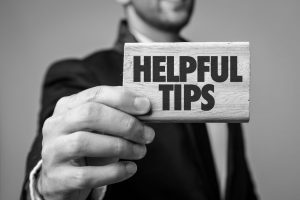 Many patients enjoy reading about the remedy they have been prescribed. This is entirely understandable, as it can be both interesting and insightful. However, if you have not undergone training as a classical homeopath, reading a materia medica can be challenging and confusing. The main challenges for many patients include:
Many patients enjoy reading about the remedy they have been prescribed. This is entirely understandable, as it can be both interesting and insightful. However, if you have not undergone training as a classical homeopath, reading a materia medica can be challenging and confusing. The main challenges for many patients include:
- Understanding the selected symptoms: You need to know which symptoms were used to select the remedy.
- Distinguishing keynotes from ordinary symptoms: You must be able to differentiate between keynotes (the most characteristic symptoms) and regular symptoms.
- Incomplete information: Not all symptoms are listed in one book. For example, some keynotes of a remedy may be in one book, while others are in a different book.
- Symptom presence is not essential: The symptoms described in various materia medicas do not all need to be present in the patient for the remedy to be effective.
- Fundamental differences in homeopathy: Classical homeopathy is fundamentally different from most other therapies, whether conventional or alternative. While most therapies target a diagnosis or a specific aspect of overall health, homeopathy aims to address the entire state of health at once. This can be difficult to grasp, leading to common questions like, “What is this remedy for?” or “What will you treat first?”
The large number of symptoms can be overwhelming and confusing. Some homeopaths try to simplify remedy descriptions by writing character sketches, but it’s important to understand that a person’s character is not a disease and should not be used to prescribe a remedy.
Challenges for patients reading materia medica
There is another issue when patients who are not experienced in homeopathy study the materia medica. Experienced homeopaths often observe that things can go wrong when patients read materia medica. This is similar to what is known as Medical Student Syndrome (see also A Brief Look at Medical Student Syndrome). Patients may start to identify symptoms in themselves that they read about in the materia medicas. Alternatively, they may begin to doubt the prescribed remedy because they do not find the information they were hoping to see. To ensure successful treatment, it is advisable to experience the treatment with an open and objective mindset.
Recommendations for patients:
- Focus on recovery: While it’s enjoyable to know something about the prescribed remedy, the most important thing is, of course, to get relief from your symptoms.
- Approach Therapy with an open mind: Trust that your homeopath has the necessary expertise and is dedicated to finding the right remedy.
- Monitor symptom changes: Pay attention to the changes in your symptoms rather than focusing on the specific remedy. These changes are crucial for determining how to proceed with the treatment.
- Ask for the remedy name at the end of treatment: It’s often best to ask for the name of the remedy only after the treatment is complete.
- Read reliable sources: If you still want to read about a remedy, rely on trustworthy sources rather than forums, Facebook pages, blogs, etc. The books mentioned earlier in this article are good options, and some may even be available online.
By following these tips, you can support your treatment process and avoid common pitfalls that may arise from misunderstanding or misinterpreting the materia medica.
Materia Medica and our training as a classical homeopath
The wealth of available materia medica, both in terms of information and physical books, is vast, making it a challenge to navigate. However, as a professional classical homeopath, it is crucial to know when to use which sources, as this saves time and effort. In our training program, we extensively teach you how to select and utilize the appropriate type of materia medica for various situations. We also provide historical and contextual background on a large number of books and authors, allowing you to place everything in the correct context.
Another critical aspect, perhaps even more so today, is knowing which materia medica are reliable and which are of lesser quality. Unfortunately, in the last two decades, a fair amount of unreliable information has found its way into published materia medicas. We equip you with the tools to navigate this issue, enabling you to confidently select the right remedies for your patients.
 Our curriculum includes a selection of the most reliable books, which will continue to be highly useful even after you graduate. It’s also worth noting that we recognize the impracticality of memorizing everything. The sheer volume of available information is too vast for anyone to retain entirely. Therefore, our exams are open-book, focusing more on your ability to quickly find the right information rather than memorizing facts. This approach is more aligned with real-world practice.
Our curriculum includes a selection of the most reliable books, which will continue to be highly useful even after you graduate. It’s also worth noting that we recognize the impracticality of memorizing everything. The sheer volume of available information is too vast for anyone to retain entirely. Therefore, our exams are open-book, focusing more on your ability to quickly find the right information rather than memorizing facts. This approach is more aligned with real-world practice.
By teaching you how to efficiently use the materia medica, ensuring you understand the context of the information, and emphasizing the importance of source reliability, our training prepares you to be a competent and confident classical homeopath.


